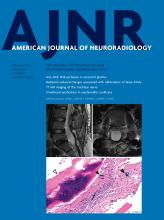We appreciate the feedback from Branstetter et al. As with any retrospective study, our study has limitations. One of the main limitations of our study is that the lumbar punctures (LPs) were performed by a variety of radiologists with variable levels of experience, including trainees.1 While this feature introduces potential confounding variables, we believe it is more indicative of how LPs are performed in most radiology departments; thus, it is a more accurate estimation of post–dural puncture headaches (PDPHs) necessitating an epidural blood patch (EBP). The number of LPs performed in radiology has been increasing.2 They are performed by a variety of practitioners with a variety of experience levels, including increasingly by nonphysician providers such as in the study of Rodriguez et al.3 We believe our study is a “real-world” estimation of EBP rates in a heterogeneous patient population with a heterogeneous group of operators. Our study was designed to examine whether there were differences in EBP rates when comparing traumatic with atraumatic needles stratified to the body mass index, not to determine whether there were different EBP rates based on sex or age.
We do not know why our rates of EBP in the Quincke group were higher than those found in the study of Rodriguez et al.3 A different patient cohort certainly could be contributory. At the institution where the data were collected, there was a relatively low threshold to perform an EBP in patients with post-LP headaches, and there was a streamlined process for clinicians to refer patients for EBP. Perhaps the threshold for performing an EBP was different at the two institutions. The rate of post-LP “any headache” was higher than the “severe headache” rate at 2.2% in the study of Rodriguez et al.3 Our rate of EBP in the Quincke group was well below that reported in the study from Hatfield et al4 for fluoroscopically guided LPs with a 22-ga Quincke needle, which was 15.2%.
We acknowledge an error in Table 3 of our article. As stated in our results section, we found no statistically significant difference in rates of EBP when comparing the 22-ga Quincke with the 20-ga Quincke needle. The confidence interval in Table 3 is correct. The corrected P value is .411.
We believe that our study and other studies involving both fluoroscopically guided and non-fluoroscopically guided LPs are compelling in demonstrating an increased rate of PDPHs necessitating an EBP when comparing traumatic-versus-atraumatic spinal needles. However, these studies suffer from the inherent limitations of retrospective studies. We believe a well-designed prospective randomized study would likely end any remaining debate.
- © 2023 by American Journal of Neuroradiology












